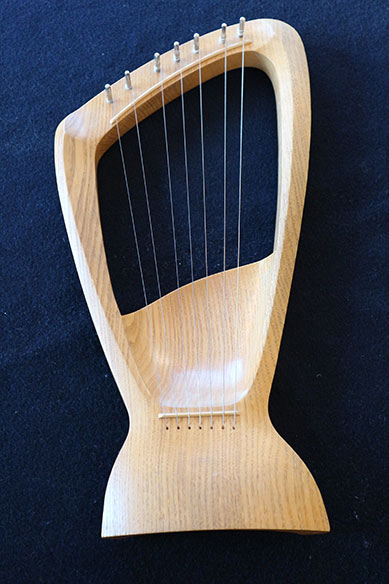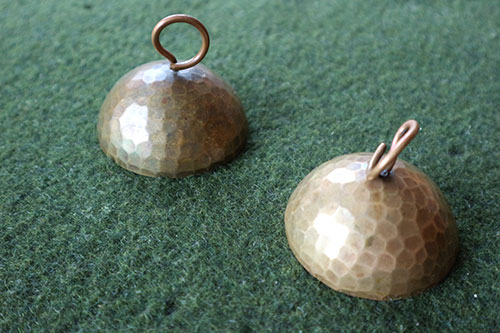Singing and Music for Babies and Toddlers
Monica Bissegger
Last update: 02.01.2020
Have you noticed how your voice changes when you talk to your baby or toddler? Your voice becomes softer, lighter, higher, more melodious, more songlike. As an adult, you adjust your expressions to your child. You are attentive to him or her. You are amazed at her smile, at the radiance of her eyes, at the sounds that she makes. And soon you notice how you smile, shine and “join in” yourself, going along with the “sing-song”.
This tuning in to your child by being with him with your whole being (just as he is with you with his whole being) gives your child vital feelings of protection, safety and security. The happiness that you feel finds its way to your child via your caressing voice. You have begun to sing.
Singing
When we sing, we’re entirely in touch with ourselves. We become calm, feel secure within ourselves, feel free, joyful and confident. It warms us to the soul. Singing makes us forget all our fears and worries, it makes us courageous and joyful.
Children feel the moods of adults very precisely. They feel our peace, our security, our confidence, our trust and our spiritual warmth when we sing for them. They feel our attention and devotion. They feel protected and secure.
Whether you as parents feel that you have “beautiful” voices or not is not decisive. What’s important is that it’s your voice. Choose a pitch that is comfortable for you, which lets you sing easily. When you sing for your baby, you will notice how you tend to sing rather lightly and quietly. You adapt your voice to your little one and may be astonished at how “beautiful” your voice sounds.
It is best to start singing during pregnancy if you have not sung for a while. Hum a little, or sing a song, possibly even a nursery rhyme – whatever comes to mind. You will notice how soothing this is and how it lifts your mood. You can also sing for your baby as a way of seeking contact with him or her. You may even feel an intimate togetherness.
If your baby is already born, you can sing or hum for her while holding her or when she is lying in her little bed. Even if your baby is premature, you can stand at the incubator and sing (1, 2).
A mother described her experience singing to her premature baby during the time that he had to lie in an incubator: “I saw how I caressed my child with my singing.”
Songs
Maybe you remember a song from your own childhood. You’ll notice how deeply connected you are to this song. You will feel the need to sing this song to your own baby. It is important to find a lullaby that you can sing to your baby over and over again for a very long time. An evening ritual will help your child to confidently lie down in bed and find sleep. An example of a well-known evening song is (3):
Guardian angel mine, keep me fine,
Day and night, early and late,
Till my soul goes to heaven,
Guardian angel mine, keep me fine.
You can also sing while changing your baby’s diaper or dressing him or her. Maybe you’ll sing about what you’re doing together at that moment. Or you sing when your baby cries and needs comfort. You rock him in your arms and hum a few notes. It doesn't always have to be a song. You can make up melodies while rocking your baby. You will notice that you yourself become calm by singing and this can be an important help to your baby.
Musical instruments
The children’s harp (Choroi instrument) (4) was developed for small children (5).

Fig. 1: Children’s harp © Monica Bissegger
It has an open body. Its sound is peripheral, quiet and fine. Its seven strings are tuned on a pentatonic scale from d’ to e’’ in pure fifths around the central note a’ (d’ – e’ – g’ – a’ – h’ – d’’ – e’’), without half tones. It is played in what is known as the mood of fifths (a recommendation of Rudolf Steiner) (6, 7). Pentatonic melodies can be freely invented with the children’s harp. The oscillation of the tones around a middle tone conveys a mood of floating and lightness. This mood is suitable for your baby’s evening ritual, later also to accompany stories or fairy tales. You can also play pentatonic songs. You can sing along.
If you feel that you want other musical instruments, choose small and simple ones, such as a bell, tambourine, or claves.

Fig. 2: Copper bell © Monica Bissegger

Fig. 3: Tambourine © Monica Bissegger

Fig. 4: Claves © Monica Bissegger
As you play, be very attentive to how your child reacts. Make it quieter or a little louder, the way it feels good to your child. How long you play is entirely up to your child. Make sure that not too many sensations overlap. Usually not much sound is required, then children want to become active and discover something themselves.
The most important “musical instrument” for small children is the voice. So, it doesn’t necessarily have to be a musical instrument. The main thing is that your child be repeatedly surrounded by the lightness of the sounds and the associated mood.
Just as you yourself become calmer and more balanced, even more joyful when you hear these musical sounds, your child will also become calmer and more in balance. Your shared joy creates a deep connection between you.
Bibliography
- Bissegger M. Musiktherapie bei frühgeborenen Kindern und ihren Müttern. In: Aldridge D (ed.), Kairos V. Beiträge zur Musiktherapie in der Medizin. Bern: Hans Huber Verlag; 2000.
- Bissegger M. Musiktherapie bei frühgeborenen Kindern und ihren Müttern. Anthromedics: https://www.anthromedics.org/PRA-0805-EN
- In: Engel mein, Engel du. Schlaflieder und Gedichte illustriert von Angela Koconda. 2nd ed. Stuttgart: Verlag Freies Geistesleben; 2017. For an alternative in English, see: Ellersiek W. Giving love, bringing joy. Hand gesture games and lullabies in the mood of the fifth, for children between birth and nine. Chestnut Ridge: WECAN; 2003. See also companion CD 2004.
- See also: www.choroi.org
- Laier M, Beilharz G. Kinderharfe spielen. Anregungen für Eltern und Erzieherinnen. Weilheim/Teck: Edition Bingenheim; 2009.
- Steiner R. Das Wesen des Musikalischen und das Tonerlebnis im Menschen. GA 283. 5th ed. Dornach: Rudolf Steiner Verlag; 1989.
- Ellersiek E. Wiegen- und Ruhelieder in der Quintenstimmung. Stuttgart: Verlag Freies Geistesleben; 2001.